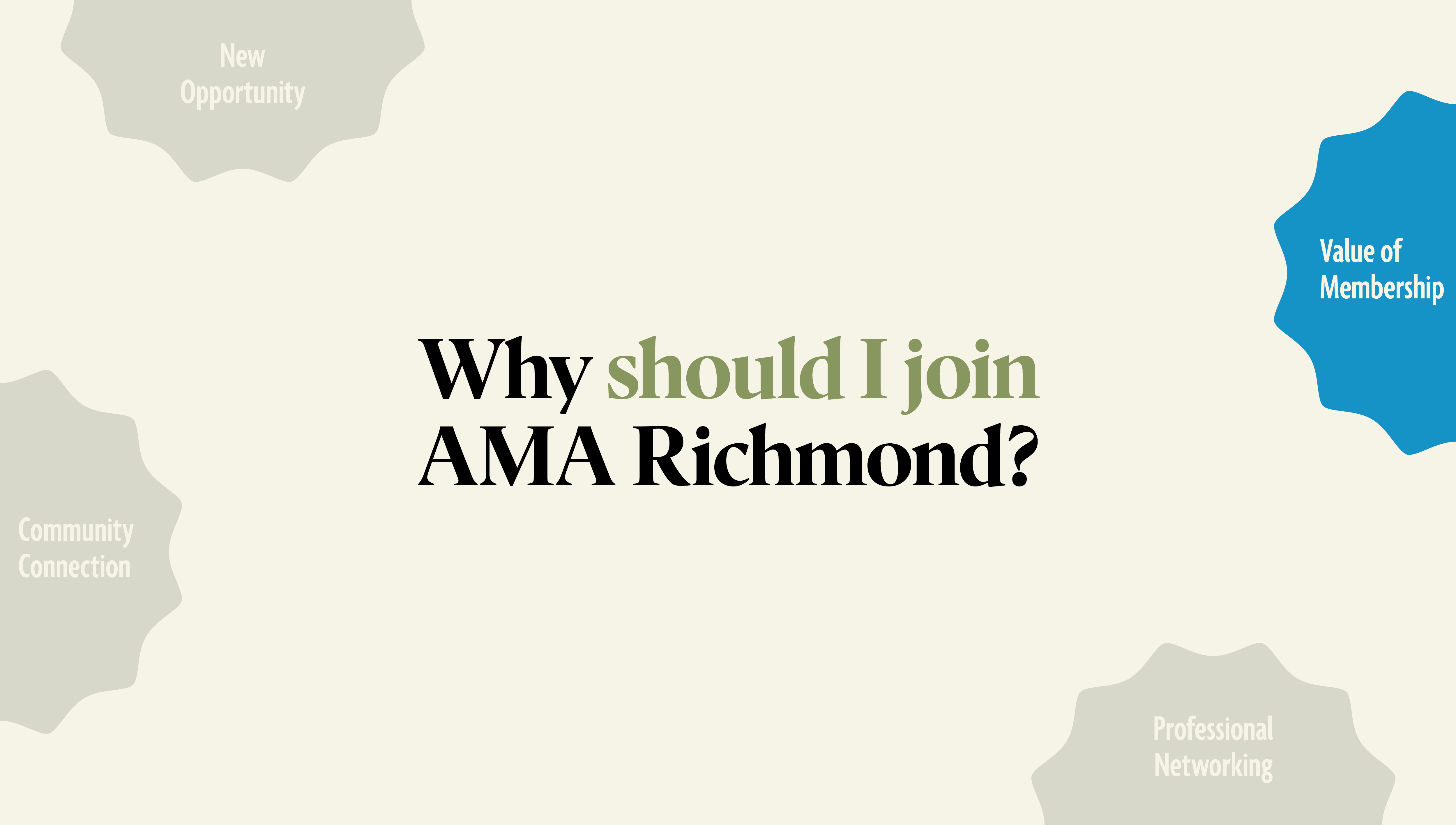In their book, Built to Last, Jim Collins and Jerry Porras coined the phrase “the tyranny of OR.” They describe how choosing between seemingly contradictory concepts—focusing on this or that—often leads to missed opportunities. Breakthroughs, they argue, happen at points of integration: art and science; form and function; creativity and technology.
Today, a new type of professional has emerged: the “hybrid.” Hybrids combine concepts that have traditionally been considered separate, distinct and sometimes contradictory into their education, training, job roles and leadership. As a result, they are helping organizations benefit from digital disruption, creating new models for change, and bridging functional boundaries. The path they’re charting may well be a new model for professional development and leadership roles of the future.
There was a time when conventional career wisdom was to choose an area of focus and work hard to develop expertise, reputation and relationships within that domain. Young people in their 20s fretted if they hadn’t yet found this focus, worried that their career prospects might not shine as bright. Workers in large companies developed their careers within organizational silos, rising through the ranks of functions like finance, marketing, operations or IT. Pundits cited the “10,000-hour rule”—the idea that this amount of time was required to reach meaningful expertise and success in any field. As a result, many knew a great deal about their specialty but few knew about—or even expressed interest in—other areas.
However, events occurred that caused some people to re-evaluate this model. These included a faster pace of change, disruption resulting from rapid adoption of mobile, social and digital technologies, and increasing customer expectations. Companies that wanted to survive and thrive in this environment needed to focus on innovation and change. And, breakthroughs in innovation and change often benefit from the integration of seemingly contradictory concepts. Professionals with deep expertise in functional areas were still badly needed, but something was missing. Enter the hybrids.
Who Are Hybrids?
Hybrid professionals have emerged over time, often driven by curiosity and emerging needs. They developed expertise in one area early on but, for various reasons, diverted some of their energy, time and attention to learning another area as well. The knowledge they acquired, the relationships they developed, and the nature of their work all began to change as a result. In some cases, hybrid professionals honed their skills across disciplines because of a formal training program, such as corporate leadership programs that rotate participants through brief stints in various functions. However, in many instances, people grew into hybrids as a result of a shifting landscape that required and rewarded the integration of and collaboration between disciplines. Hybrids typically stand out in organizations. Consider the case of a former entrepreneur who is now leading internal innovation in a Fortune 500 company. Or the case of a marketing professional who now seems to know as much about technology as the IT guys and gals. Often referred to as generalists or multi-specialists, hybrids bring value to organizations that is only now beginning to be better recognized, understood, encouraged and rewarded.
Characteristics of Hybrids
The most obvious characteristic of hybrids is that they have expertise in more than one discipline. However, there are several other traits that many hybrids seem to share.

- Collaboration – Hybrids enjoy collaborating with others and bring a team-oriented approach to their interactions. They tend to have a mindset of WE instead of ME. They assume positive intent when dealing with other teams or departments.
- Curiosity – Hybrids are often very intellectually curious and have broad interests in other disciplines. They enjoy learning new things and growing through new experiences. They share an intense interest in other people and value backgrounds and experiences that are different from their own.
- Intrinsic Motivation – Many hybrids are motivated by purpose more so than money. They gain satisfaction in their work through a degree of autonomy, a freedom that allows them to learn about and participate in other disciplines. They are more concerned with the results of their work than with who received credit or traditional notions of who does what.
- Rebelliousness – A little rebellion against the status quo every now and then is not such a bad thing. Hybrids aren’t afraid to cross organizational and functional boundaries. They have less respect for “the way its always been done” and tradition, and they have the capability to deconstruct behavioral norms and ossified patterns.
Hybrid Examples
Examples of hybrids are increasingly easy to find. Hybrids are emerging in multiple industries and geographic regions. While a comprehensive list of examples would be very long, there are several examples that have become more common in recent years.

Marketing + Technology
As I’ve written in previous blog posts (e.g., Why Marketing Technology Is Set To Explode), marketing is going through the most significant, technology-fueled transformation in its history. Direct, digital relationships with customers are now more critical to company success than ever before, and marketing technology is driving much of this. All of a sudden, CMOs are spending almost as much on technology as their CIO counterparts. In fact, Gartner predicts that CMOs will have larger IT budgets than CIOs by 2017.
Not only is technology much more important to marketing than before but it is also more complex than ever before. In recent years there has been an explosion in marketing technology options from both startups and established players. Vendors have released major advances in lead generation, lead scoring, web analytics, marketing automation, CRM, etc. And, the ever increasing number of digital interactions between companies and their customers has resulted in massive volumes of data. For example, Google says that 90 percent of the world’s data was generated in just the past two years.
This environment has given rise to the marketing technologist. Marketing technologists are hybrids who bring deep expertise in both marketing and relevant marketing and digital technologies. CMOs are rapidly hiring “Chief Marketing Technologists” and “Marketing Operations Leader” roles. Thought leaders in marketing, such as Jay Baer, Scott Brinker, Laura McLellon, Paul Roetzer, and Mayur Gupta, have chronicled the rise of the marketing technologist, the talent gaps that exist, and the need for more hybrid professionals in marketing. The July issue of Harvard Business Review is devoted to the new basics of marketing and includes an excellent article, “The Rise of the Chief Marketing Technologist,” by Scott Brinker and Laura McLellon. They describe the evolution of this role and make the case that the future of marketing belongs to the generalists, the hybrids.
Big Company + Startup
In big companies projects have to scale and Lean Startup help us to do it” – Beth Comstock, CMO of GE
Another example of hybrids is in the combination of entrepreneurial, startup expertise with big company innovation expertise. As large companies pursue innovation and respond to digital disruption, many of them are looking to startup models and former entrepreneurs for help.
Startups create something new and of value under conditions of extreme uncertainty. Now, many people are adapting startup practices, such as Lean Startup, within large companies in order to accelerate innovation. The Lean Startup approach helps companies use both money and human creativity more efficiently and effectively. Rapid iterations and feedback loops allow teams to test their earlier hypotheses of customer value. Customers provide feedback and teams observe and gather data around customer behavior, usage, and experience. The knowledge gained through this process allows teams to adjust and pivot in order to maximize value.
There’s a big reason that large companies need to innovate and act more like startups—those that don’t aren’t likely to be around for long. According to the consulting firm Innosight, the average lifespan for a company in the S&P 500 dropped from 61 years in 1958 to 25 years in 1980 to 18 years today. What’s even more astonishing is that, at the current churn rate, 75 percent of the S&P 500 will be replaced in 25 years. This background provides the context for understanding why executives in big companies feel tremendous pressure to innovate.
More and more brands are creating innovation labs, often staffed with former entrepreneurs, and traditional companies are starting to embrace entrepreneurship as a core competency. Innovation lab models vary—some are located within corporate headquarters while others often located in outposts such as Silicon Valley or other hubs of digital and tech talent. Beyond driving innovation, these labs also serve as a recruiting tool by helping to shape the image of large companies and attract digital talent.
Hybrids in this space typically have some entrepreneurial background or startup experience. In some cases their startup was acquired by the larger company. In other cases, they have built and sold a successful startup and pursuing innovation in a large company is their next career challenge. To be successful these hybrids need to blend their entrepreneurial experience with the realities of working within a large company. Selling their ideas, building relationships and support, and navigating a complex corporate environment are all skills they master in order to be effective.
Form + Function
Have you noticed how easy and enjoyable many smartphone apps are to use? How intuitive, sticky and user-friendly cloud-based applications such as Evernote and Salesforce have become?
With the rise of cloud-based, on-demand software, more and more software offerings are designed to cater explicitly to the needs of users. They typically require little or no training, are intuitive and easy to use, offer simple designs and feature-sets, and provide much more enjoyment. In the past, vendors could get away with ugly, cumbersome, difficult-to-use software. Today, they simply can’t. In fact, Net Promoter Scores for software vendors are more correlated to customer experience than product performance.
At Evernote, a maker of a free application that helps you remember everything across all of the devices you use, the company has made a radical shift in it’s approach to building software. As Phil Libin, Evernote’s CEO, describes it, they went through a very intentional effort to make experience and design the focal point of their process. In the past, Evernote followed a traditional software development approach that can be described as “feature first.” Several years ago, Evernote changed their approach from “feature first” to “experience first.” They now start with the design and allow everything to follow from there. They recognized that they had talented designers on staff, but they needed to include designers earlier in the process and invite them to all the key meetings.
Design is not just what it looks like, design is how it works.” – Steve Jobs
These designers are hybrids who have blended expertise in both form and function. A concept popular within modernist architecture and industrial design circles, marrying form and function requires designers who can optimize the attractiveness (the “form”) of their designs with usability and usefulness (the “function”). Many of these hybrids started out as web or software designers with a focus more akin to graphic designers, designers primarily concerned with the presentation of text, images, colors, and other creative elements. However, as more websites became interactive and more attention was placed on software usability, these designers shifted into hybrid roles. They began to develop expertise in user experience and human-computer interaction. They developed skills in ethnographic research and other approaches to developing deeper user understanding and even empathy with their users. By combining these disciplines, hybrid designers create beautiful interfaces and websites that are also intuitive, easy to use, simple, and enjoyable.
Humanist + Technologist
 One of the most interesting examples of hybrids in recent years is the combination of humanist and technologist. There is growing awareness of the need for this hybrid focus and role, increasingly so in a digital era that includes the Internet of Things (IoT) and continued automation of processes and traditional roles. One of the ironies of the digital age is that even as the importance of technology increases, the first priority of organizations should be to humanize their interactions with their customers. In the words of uber-research analyst Ray Wang, “The constructs of B2B and B2C have changed to People to People (P2P). Contextual relationships, trust, transparency, and value exchange are the key pillars.”
One of the most interesting examples of hybrids in recent years is the combination of humanist and technologist. There is growing awareness of the need for this hybrid focus and role, increasingly so in a digital era that includes the Internet of Things (IoT) and continued automation of processes and traditional roles. One of the ironies of the digital age is that even as the importance of technology increases, the first priority of organizations should be to humanize their interactions with their customers. In the words of uber-research analyst Ray Wang, “The constructs of B2B and B2C have changed to People to People (P2P). Contextual relationships, trust, transparency, and value exchange are the key pillars.”
While many people would still consider the phrase “humanist technologist” to be an oxymoron, there are a growing number of these hybrids who focus on both humanism and technology. They bring several priorities to their work:
- Ensure that technology is people-centered and driven by deep understanding of users and their goals;
- Bring focus to the role of trust in customer relationships and ensure trust is maintained through company behavior, customer privacy, and relationships; and
- Keep the human face of a brand in focus and alive in interactions and experiences.
In many cases, these hybrids have backgrounds and expertise in technology but developed interests in disciplines like Design Thinking and Customer Experience (CX). Some have educational backgrounds in engineering, science, math and technology as well as in art, literature, or social work. They enjoy helping to use technology in ways that enhance enjoyment, interactions and relationships between people. They care about the nature of being human as well as the nature of technology and actively work to reconcile the two. In other words they focus on technology in service to people—they maintain that while technology is responsible for connecting people, it’s always people that matter.
Your 90 Day Plan
Given the current environment and pace of change, the ranks of hybrid professionals are likely to continue to grow. The value they bring to organizations is now better understood, encouraged and rewarded. However, there are still many barriers that make hybrid roles more difficult to pursue and introduce in organizations. As companies consider evolving the way they think about traditional roles and hybrid roles, here are a few recommendations to keep in mind.
- Change Recruiting Practices. Hybrids are difficult to recruit. Not only are they hard to find, traditional recruitment practices often overlook them. Because they don’t fit neatly with traditional job descriptions and have more varied backgrounds, recruiters tend to pass them by. To hire hybrids, most companies will need to significantly revamp their recruiting and hiring processes.
- Create New Role Definitions. Companies will need to work with their senior leaders to proactively understand hybrid needs and define new roles. New roles, such as “Chief Marketing Technologist,” are critical to many organizations, but it takes time to define and recruit for these types of roles.
- Encourage Collaboration. Hybrids thrive in environments where collaboration and communication are the norm and are rewarded. Because they work at the intersection of disciplines, they need to have strong relationship-building and teamwork skills. Recruit professionals with these traits and reward this type of behavior.
- Pursue Purpose. Purpose is a much stronger, more sustainable motivator than money, especially for hybrids. Pursue a purpose that your organization can rally around and engage hybrids who share excitement for your mission.
- Build Leadership Support. Communicate the value of hybrid role to senior executives and encourage their support. Executive understanding and leadership in supporting hybrids is critical.




